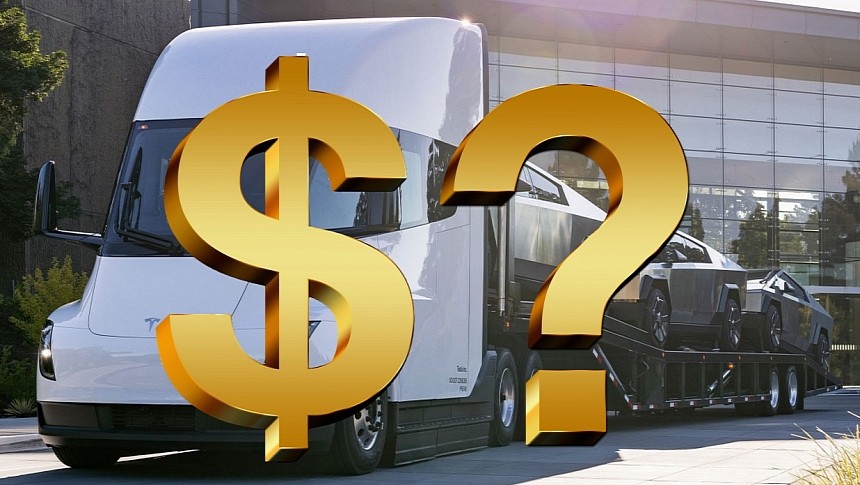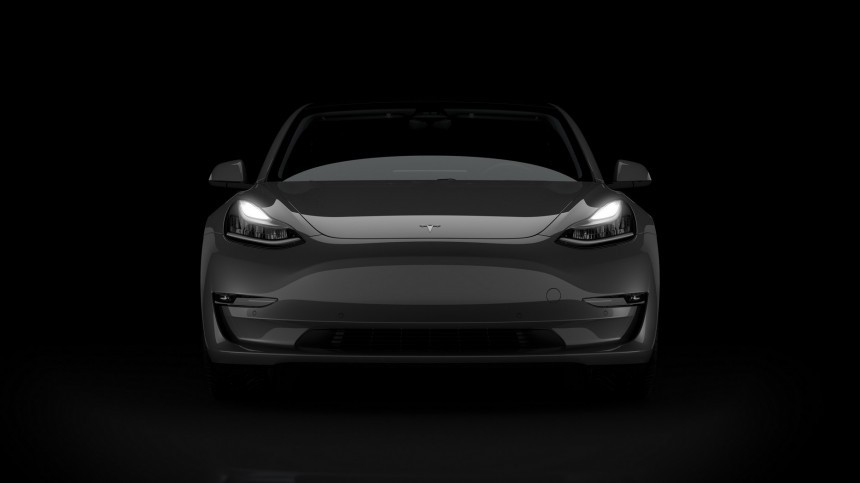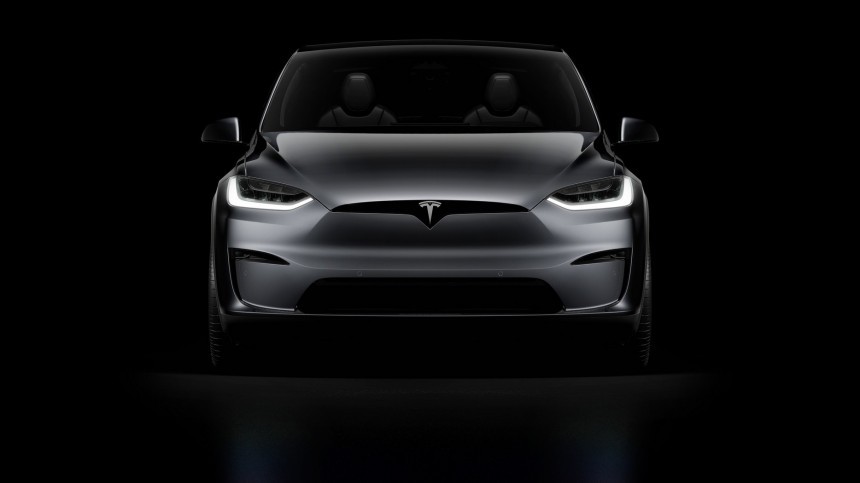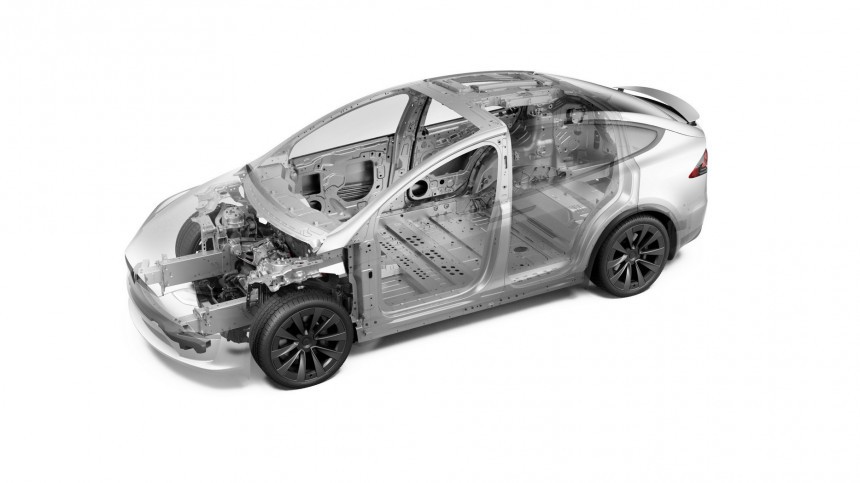On July 20, I made an exercise to understand the profits Tesla's earning reports suggested the company had. At that point, they made no sense at all. With the release of the Q3 2023 results, I decided to repeat these calculations in a more elaborate way. The results are even more disappointing than the original ones: the numbers are unbelievable (in a negative sense).
Everything started when Nikkei Asia calculated the battery electric vehicle (BEV) carmaker made $9,570 per car it sold in Q3 2022. The Japanese newspaper took the unaudited GAAP net income attributable to common stockholders ($3.292 billion) and divided it by the 343,830 BEVs Tesla managed to deliver in that period. The result was $9,574.50, which Nikkei Asia rounded down to the value it published.
That's already walking in quicksand. Tesla often brags about being more than an automotive company: it also works with services, energy – which includes generation and storage – and a few other activities that do not make money. If they did, the BEV maker would have to disclose them in its earning reports. In other words, its profits allegedly come from more things than only cars, which makes that calculation imprecise and the financial statements more difficult to understand. We have no option but to deal with what we have.
Following Nikkei Asia's idea, I repeated that calculation in all quarters but also considered the price cuts the BEV maker performed. In Q4 2022, it disclosed $3.687 billion in profits by selling 405,278 cars. The earnings per unit dropped to $9,097.46, but the discounts would only start in January.
What may explain that is a note on the Q3 2022 Form 10-Q that Tesla submitted to the US Securities and Exchange Commission (SEC). In the document, the BEV maker said that "there was an increase in combined average Model 3 and Model Y costs per unit due to overall rising raw material, commodity, logistics and expedite costs." It also mentioned ramping up its new factories and making the 4680 cells was quite expensive. However, what deserves a more detailed look is the first part, about higher production costs for the vehicles that really move metal at Tesla. That point deserves special attention, but not now.
In Q1 2023, price cuts happened twice: in January and March. The rises that eventually occurred in the same quarter and future ones did not neutralize the discounts compared to 2022 prices, so I will not consider them. The BEV maker disclosed at the time a net income of $2.513 billion for 422,875 BEVs, which corresponds to $5,942.65 in profits per car delivered. That's much less than it was in previous quarters, but wait until you see the genuine possible losses the discounts caused…
By the end of that quarter, Tesla had already reduced prices by an average of $14,400 compared to those at the end of 2022. That's more than it supposedly made per each car it sold in Q4 2022, let alone in Q1 2023.
The most significant rebates were on the Model S and Model X, but forget about them and focus on the Tesla vehicles that really sell: the Model 3 and Model Y. Until that point, the electric sedan had an average drop of $7,000, which was already more than the average profits per unit that the BEV maker reported for Q1 2023. In the electric SUV's case – Tesla's best seller – the average reduction was $10,667.
Working with averages is complicated. If you apply the average discount ($14,400) to all vehicles delivered in that quarter (422,875), you reach a loss of more than $6 billion ($6,089,400,000, to be precise). That number is not correct because the Model S and the Model X had higher price cuts and sold only a fraction of all the units of the Model 3 and Model Y that Tesla delivered in that quarter. In the task of discovering Tesla's profits, they are a mere distraction.
On top of that, the BEV maker does not report sales per market. Although it performed discounts worldwide, they were different. We'd need the exact volumes of each derivative the BEV maker sold in each market to quantify how much money it truly lost.
Another issue is that Tesla does not even break the sales numbers by model; it seems to work with platforms. The Model S and Model X share the same architecture, so the BEV maker's delivery numbers for them are unified. In Q1 2023, it handed clients 10,695 units of both. The Model Y and the Model 3 are affected by the same strategy: they have landed in 412,180 customers' parking spots in that quarter.
The average price reduction for the Model 3 and Model Y in Q1 2023 was $8,833. Multiply that by 412,180, and you'll see the BEV maker decided not to earn $3,640,785,940. As Tesla advocates will dispute even that, let's be unrealistically conservative.
In that same quarter, Tesla sold three versions of each of these two models, for a total of six. The lowest discount was $4,000 (for the Model 3 RWD), and the highest was $11,000 (for the Model Y Long Range and Performance). If you do 4,000 times 412,180, you'll obtain $1,648,720,000. That's the minimum possible amount Tesla lost only with the Model 3 and Model Y price cuts in Q1 2023. If you apply this minimum discount to all the vehicles it delivered in that quarter (422,875), that's $1,691,500,000. That is also not the correct value – which is much higher – but it will work to make my point. The net income in Q1 2023 was $2.513 billion, resulting in a profit per car of $5,942.65. It is here that things get harder to explain.
Tesla's total revenues in Q4 2022 were $24.318 billion, with $9,097.46 in profits per unit. In Q1 2023, total revenues were $23,329 billion, with earnings per BEV dropping to $5,942.65 and impossibly optimistic losses of $1,691,500,000 due to the discounts in that quarter. The numbers do not add up – and they do get worse.
In Q2 2023, Tesla delivered a total of 466,140 cars. The minimum price cut in that quarter was $6,750 compared to 2022 prices. Multiply one by the other, and the BEV maker lost a minimum of $3,146,445,000. The net income in Q2 2023 was $2.703 billion, and the resulting profit per car was $5,798.69. The total revenue was $24.927 billion. How has the net income remained so similar to the quarter in which Tesla "only" lost $1.69 billion? How are these numbers possible for a company that willingly lost at the very least $3.146 billion with discounts?
Finally, the minimum discount was still the same in Q3 2023 compared to 2022 prices: $6,750. As Tesla handed 435,059 BEVs, the minimum loss in that quarter was $2,936,648,250. Despite that, the BEV maker said it had a net income of $1.853 billion, which allegedly resulted in a profit per car of $4,259.19. The official total revenue was $23.35 billion.
Sum up all these quarterly "voluntary refusals to earn money," and you'll see that Tesla decided to give up on an unrealistic minimum of $7,774,593,250. I'll stress that this is the scenario with the minimum discounts applied to all cars, meaning it must have been much more money than that. There's no explanation for the total revenue to have remained so constant or for Tesla even to have presented any profits. The numbers do not add up.
Company advocates wish the stock price to appreciate indefinitely – just like Elon Musk said the robotaxis Tesla never delivered would. To achieve that, they will present you with two theories to explain the incredible earnings reports. The first is that the BEV maker managed to reduce production costs so much that the discounts were just to share these reductions with customers – something no sane automaker would do. The second is that the company made money from other sources, such as services and energy. Did it? We'll examine both hypotheses in my following stories about Tesla profits.
That's already walking in quicksand. Tesla often brags about being more than an automotive company: it also works with services, energy – which includes generation and storage – and a few other activities that do not make money. If they did, the BEV maker would have to disclose them in its earning reports. In other words, its profits allegedly come from more things than only cars, which makes that calculation imprecise and the financial statements more difficult to understand. We have no option but to deal with what we have.
Following Nikkei Asia's idea, I repeated that calculation in all quarters but also considered the price cuts the BEV maker performed. In Q4 2022, it disclosed $3.687 billion in profits by selling 405,278 cars. The earnings per unit dropped to $9,097.46, but the discounts would only start in January.
In Q1 2023, price cuts happened twice: in January and March. The rises that eventually occurred in the same quarter and future ones did not neutralize the discounts compared to 2022 prices, so I will not consider them. The BEV maker disclosed at the time a net income of $2.513 billion for 422,875 BEVs, which corresponds to $5,942.65 in profits per car delivered. That's much less than it was in previous quarters, but wait until you see the genuine possible losses the discounts caused…
By the end of that quarter, Tesla had already reduced prices by an average of $14,400 compared to those at the end of 2022. That's more than it supposedly made per each car it sold in Q4 2022, let alone in Q1 2023.
Working with averages is complicated. If you apply the average discount ($14,400) to all vehicles delivered in that quarter (422,875), you reach a loss of more than $6 billion ($6,089,400,000, to be precise). That number is not correct because the Model S and the Model X had higher price cuts and sold only a fraction of all the units of the Model 3 and Model Y that Tesla delivered in that quarter. In the task of discovering Tesla's profits, they are a mere distraction.
On top of that, the BEV maker does not report sales per market. Although it performed discounts worldwide, they were different. We'd need the exact volumes of each derivative the BEV maker sold in each market to quantify how much money it truly lost.
The average price reduction for the Model 3 and Model Y in Q1 2023 was $8,833. Multiply that by 412,180, and you'll see the BEV maker decided not to earn $3,640,785,940. As Tesla advocates will dispute even that, let's be unrealistically conservative.
In that same quarter, Tesla sold three versions of each of these two models, for a total of six. The lowest discount was $4,000 (for the Model 3 RWD), and the highest was $11,000 (for the Model Y Long Range and Performance). If you do 4,000 times 412,180, you'll obtain $1,648,720,000. That's the minimum possible amount Tesla lost only with the Model 3 and Model Y price cuts in Q1 2023. If you apply this minimum discount to all the vehicles it delivered in that quarter (422,875), that's $1,691,500,000. That is also not the correct value – which is much higher – but it will work to make my point. The net income in Q1 2023 was $2.513 billion, resulting in a profit per car of $5,942.65. It is here that things get harder to explain.
In Q2 2023, Tesla delivered a total of 466,140 cars. The minimum price cut in that quarter was $6,750 compared to 2022 prices. Multiply one by the other, and the BEV maker lost a minimum of $3,146,445,000. The net income in Q2 2023 was $2.703 billion, and the resulting profit per car was $5,798.69. The total revenue was $24.927 billion. How has the net income remained so similar to the quarter in which Tesla "only" lost $1.69 billion? How are these numbers possible for a company that willingly lost at the very least $3.146 billion with discounts?
Finally, the minimum discount was still the same in Q3 2023 compared to 2022 prices: $6,750. As Tesla handed 435,059 BEVs, the minimum loss in that quarter was $2,936,648,250. Despite that, the BEV maker said it had a net income of $1.853 billion, which allegedly resulted in a profit per car of $4,259.19. The official total revenue was $23.35 billion.
Company advocates wish the stock price to appreciate indefinitely – just like Elon Musk said the robotaxis Tesla never delivered would. To achieve that, they will present you with two theories to explain the incredible earnings reports. The first is that the BEV maker managed to reduce production costs so much that the discounts were just to share these reductions with customers – something no sane automaker would do. The second is that the company made money from other sources, such as services and energy. Did it? We'll examine both hypotheses in my following stories about Tesla profits.




































































